I want to learn more about mindmaps ↓

I want to learn more about mindmaps ↓
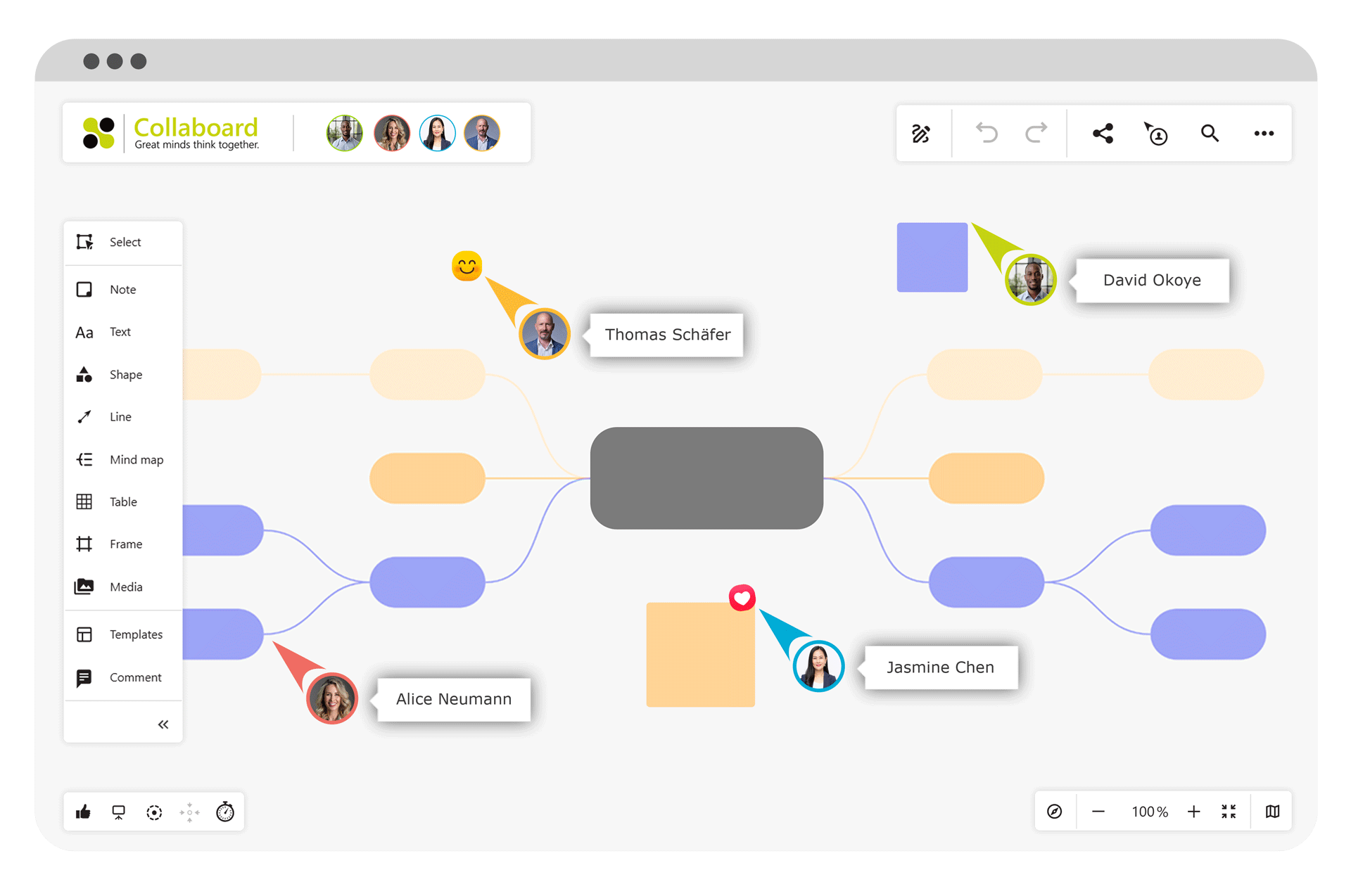
A mindmap can easily be created on a sheet of paper, on a flipchart, or on a whiteboard. If a mind map is created analogously, however, one quickly encounters space limitations and is limited in the team size that can create the mind map together.
Therefore, numerous software solutions have been developed that enable the digital implementation of mind maps.
One of the newest types of mindmap software is the online whiteboard. On an online whiteboard, various mindmaps can be created digitally easily and in collaborative work.
In the following part, we will explain to you step by step how to create a mindmap online. For the mindmap creation, we use the online whiteboard Collaboard.
Collaboard offers an infinitely large virtual surface on which you can create a mindmap with various elements alone or collaboratively in a team.
In the beginning, determine the main topic of your mind map and create an object for it on your online whiteboard. You can use a map, a text element, a shape, or a picture.
Around this main topic, your mindmap will grow. You can start anywhere on the whiteboard, and the main topic will always be the center of your mindmap.
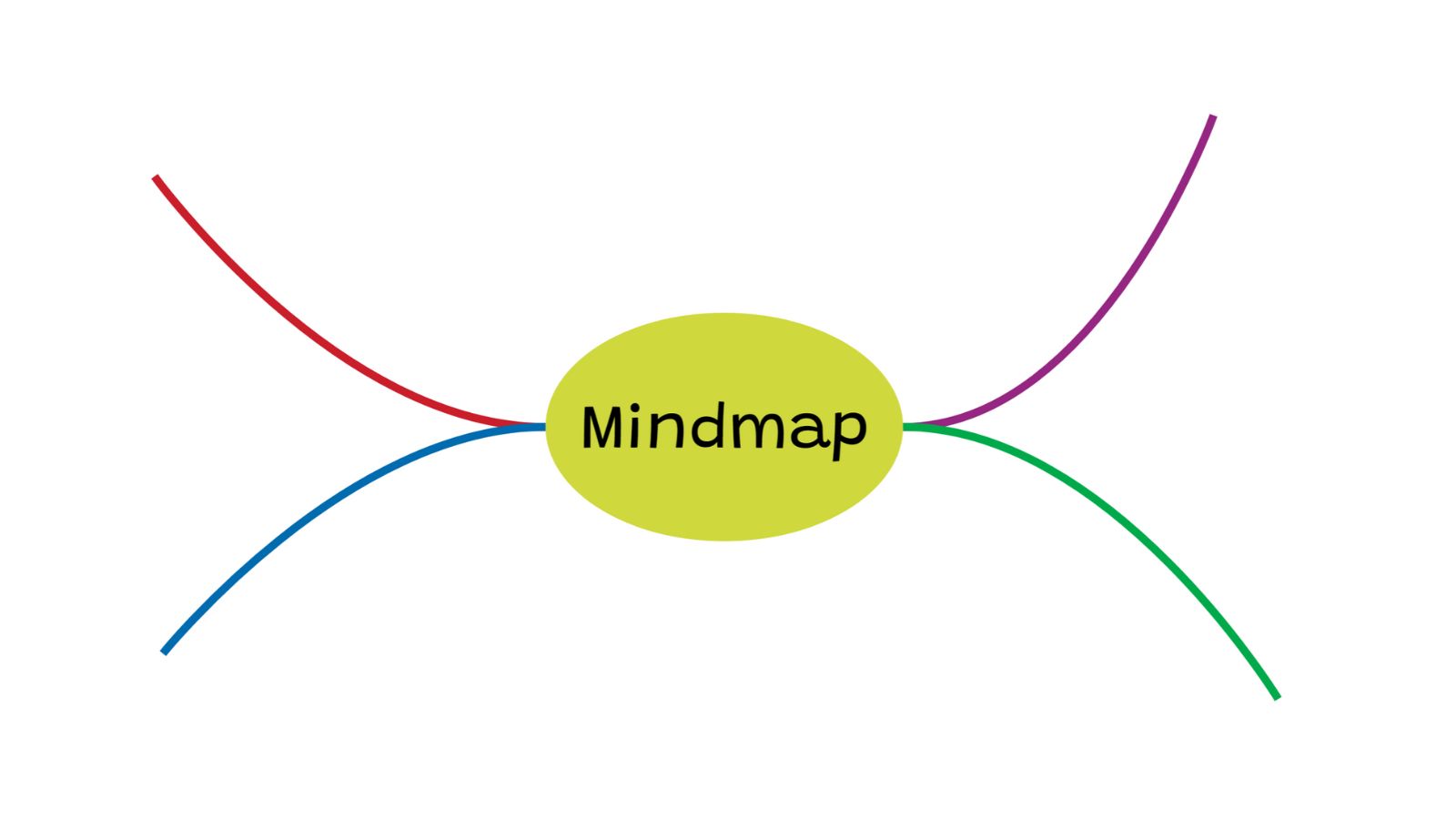
Starting from the main theme, you can now add more themes. Use the different elements and connect them to the main topic.
You can create the mind map classically with text or add images, documents, and even videos. Also, use the digital pen to give your mindmap a handwritten touch.
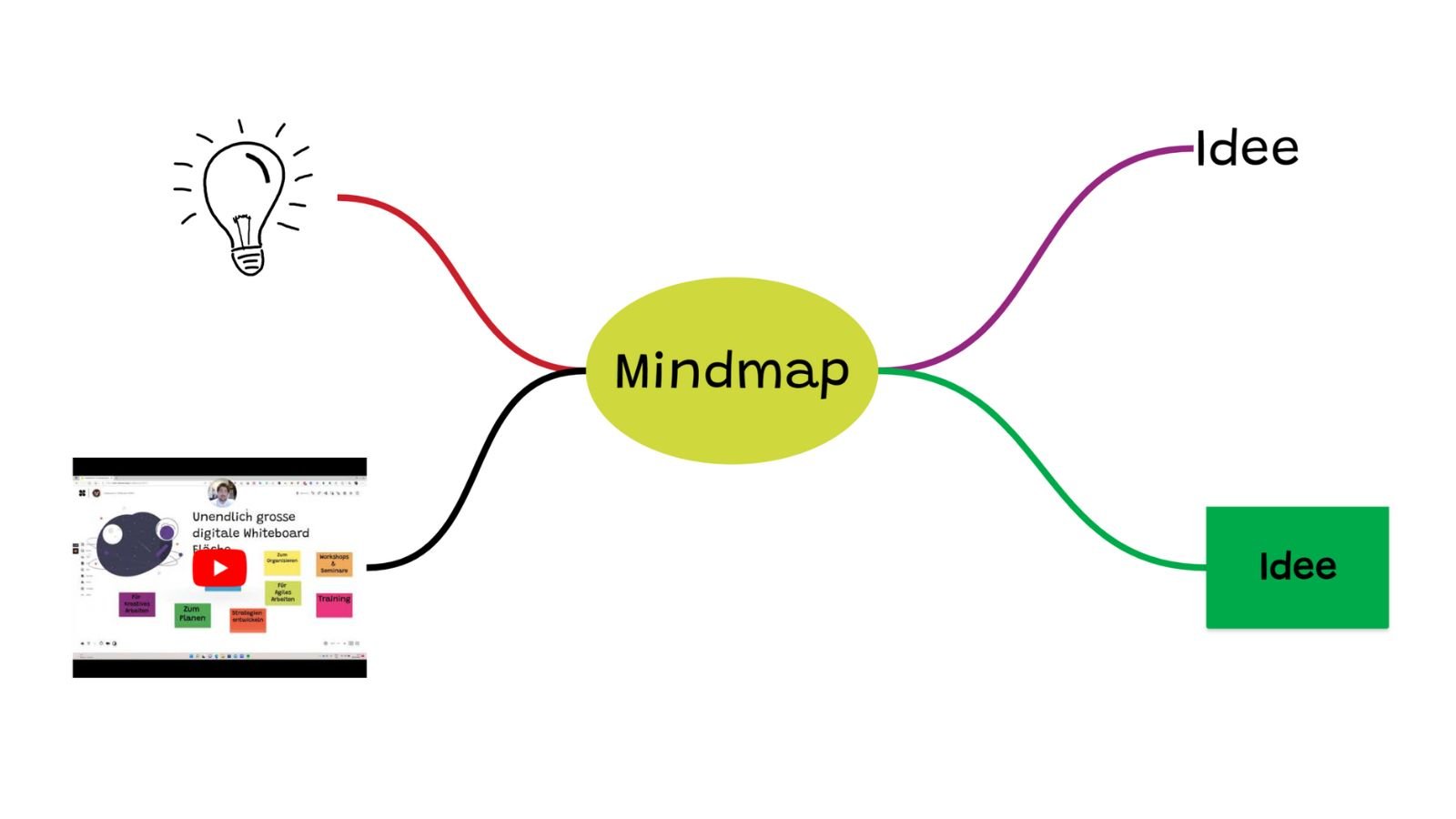
Use different colors to distinguish the individual strands of the mind map visually. You can customize the connections and elements of a strand in a color of your choice.
It is a good idea to use a different color for each strand of subtopics. This makes it even easier to see which points belong together.
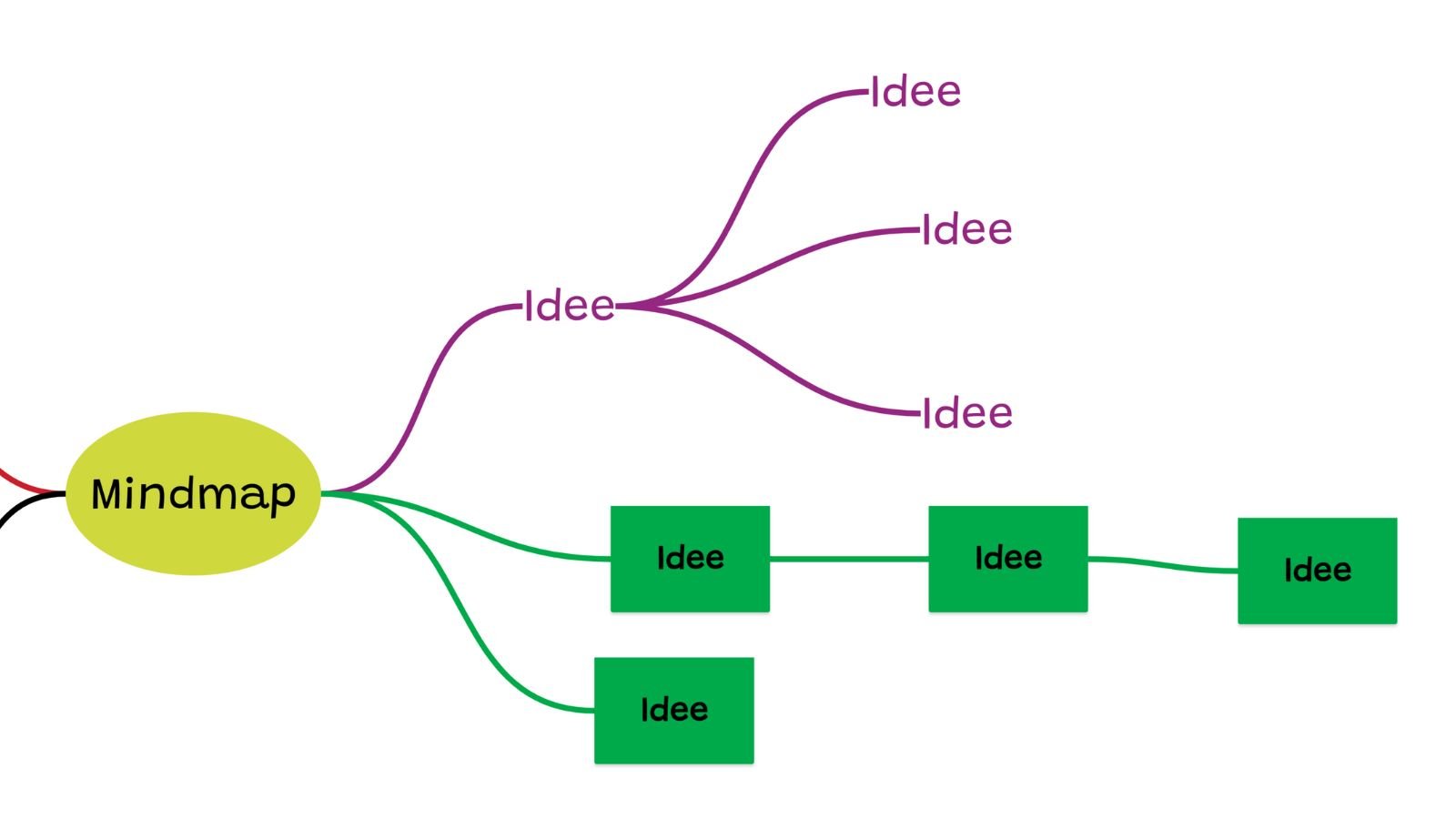
As your mindmap expands, it's important to structure it well. You can move whole sections from one place to another and simply reassign elements.
Choose a suitable background color for your mind map. Even if you work on a whiteboard, the mindmap does not always have to be created on a white surface.
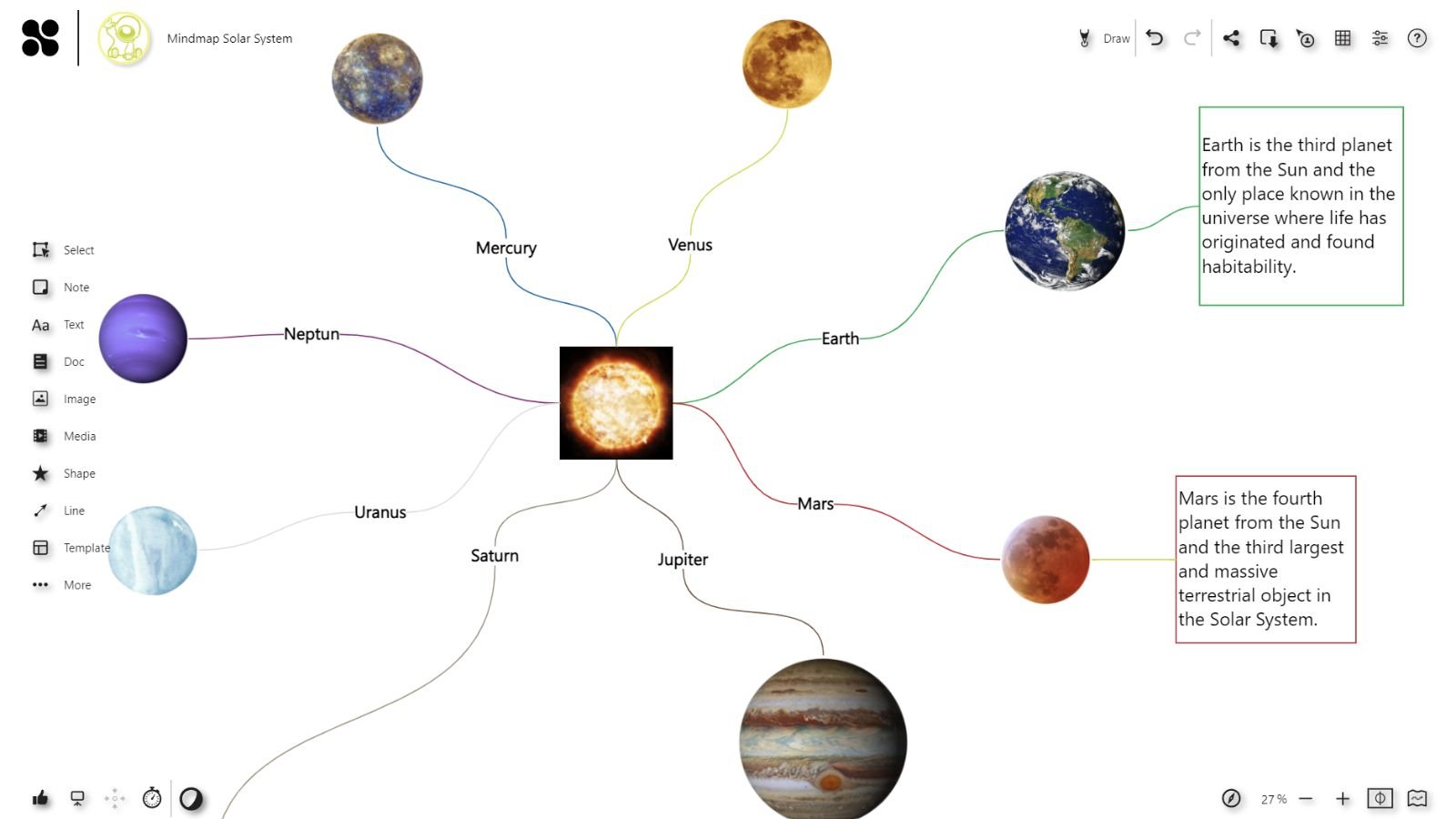
To create mind maps or other diagrams with your team as quickly as possible, you can use the default settings for the connections. With this, you can determine how your new connection lines look (color, thickness, arrows, etc.) or change the look of several lines simultaneously.
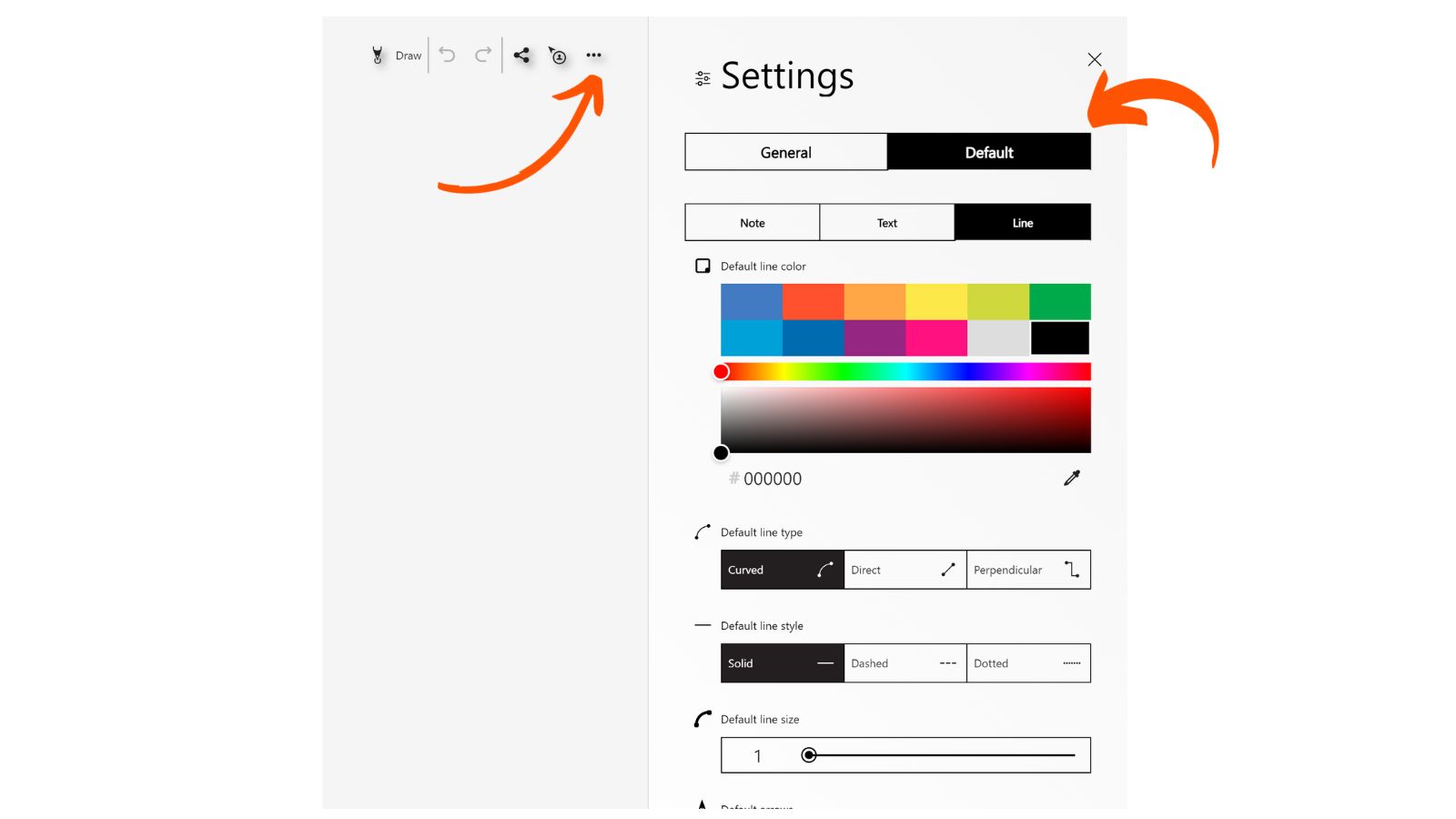
Collaboard is an intuitive mindmap tool that allows you to visualize your ideas and concepts collaboratively and engagingly. With Collaboard, you can collaborate with your team in real-time to capture and structure complex relationships, processes, and hierarchies. Collaboard is a GDPR-compliant mindmap tool.
Collaboard, the online whiteboard, offers numerous advantages for the creation of mindmaps:Different types of mindmaps can have different structures and contents depending on their purpose and scope. The prominent examples of mindmaps are:
Brainstorming mindmaps: This type of mindmap is used to collect and organize ideas. Usually, no fixed rules or structures are followed and the ideas are noted in bullet points, pictures or keywords and linked together to form the mindmap.
Planning Mindmaps: Planning mindmaps can be used to organize and visualize complex projects or tasks. Clear hierarchies and structures are usually defined to maintain an overview and facilitate the planning process.
Presentation Mindmaps: Mindmaps are an excellent way to present complex information or concepts. The visual division of a topic into subtopics makes it easier to follow the presentation and remember the content. With a mindmap, presentations become more precise and easier to understand.
Knowledge Mindmaps: Knowledge mindmaps are used to structure and visualize existing knowledge. In the mindmap, connections become quickly apparent, which makes grasping knowledge easier than reading a pure text.
Learning-Mindmaps: Learning-Mindmaps facilitate learning and improve understanding. A learning mindmap can be created for almost any topic, in which the content to be learned is presented on the mindmap in context.
Mindmaps offer numerous benefits as they are designed to present information to the human brain in a way that is easy to understand.
A mindmap is a visual representation of information that shows how ideas, concepts, and data are related.
Typically, you start with a main theme or central idea in the middle. Other subtopics are added and linked to this central idea. These links can be subdivided to show the connections between the ideas and concepts.
A mind map can be drawn by hand or created with specialized software. The advantage of a mindmap is that complex information and connections are presented intuitively and easily.
Mindmaps trace their origins to the work of Tony Buzan, a British educator and author who developed the concept in the 1960s. Buzan noticed that the human brain does not work linearly but associatively and pictorially.
That's why he believed that classic lists and linear notes are complex for humans to understand and remember.
Buzan wanted to solve this problem and developed a method to organize and visualize information in a way that better corresponds to the creative and associative thinking ability of humans. The technique he developed for this purpose he called mind-mapping.
The concept of mindmaps has spread worldwide due to its high effectiveness. Mindmaps are now universally used in various fields, such as education, business, creative work, and personal development.
For a long time now, mindmaps have not only been created on paper, but numerous software solutions support the digital creation of mindmaps. Online whiteboards are particularly suitable for this purpose, as you can work on them almost like on paper. This comes closest to the original method of creating mind maps.
Have Question? We are here to help
The mind map - also known as a thinking map - is an effective visual method for representing complex thoughts, ideas, and associations that revolve around a central theme or concept. The mind map allows for a clearer and more vivid visualization of complex thought processes than continuous text or bullet points.
A mindmap is a visual representation of thoughts and ideas organized around a central theme or concept. It resembles a tree diagram with branches and sub-branches representing the different concepts and their connections.
In mind-mapping, a central theme is first noted in a circle, around which keywords related to each aspect are arranged. The keywords are, in turn, connected to their respective aspects, resulting in a clear structure. Colors, symbols and arrows can be used to make connections more visible, and priority lists or action plans can be derived from the mind map.
We will begin in this chapter by dealing with some general quantum mechanical ideas. Some of the statements will be quite precise, others only partially precise. It will be hard to tell you as we go along which is which, but by the time you have finished the rest of the book, you will understand in looking back which parts hold up and which parts were only explained roughly.
There are numerous solutions with which you can create a mindmap online. If you use an online whiteboard to create your mindmap, you have an infinitely large surface available and can work with images and videos in your mindmap in addition to text. The online whiteboard offers maximum flexibility when creating your mindmap, and you can work on it with your team in real time.
When creating mind maps, data protection can play a role in processing sensitive data. For example, if personal information or confidential business data is included in the mind map, appropriate measures should be taken to protect this data. Especially for European companies and organizations, the Data Protection Regulation (GDPR) applies. When choosing a mind map software, the GDPR should be a selection criterion.